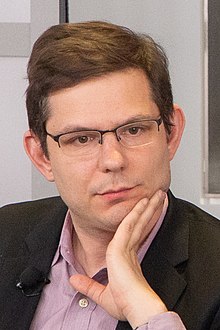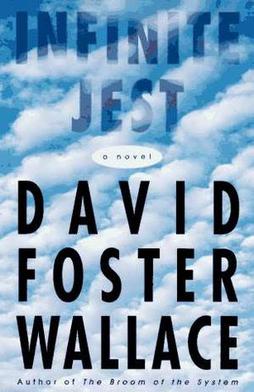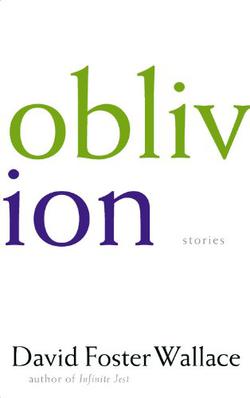Non-fiction
In 2012, Konstantinou co-edited The Legacy of David Foster Wallace with University of Missouri professor Samuel Cohen. The collection discusses American author David Foster Wallace's legacy following his death in 2008 and includes pieces by other American writers such as Don DeLillo, George Saunders, Dave Eggers and Jonathan Franzen as well as other figures in Wallace's life, such as his editor, Michael Pietsch. The collection also includes a chapter by Konstantinou, titled "No Bull: David Foster Wallace and Postironic Belief," which would later be included in Konstantinou's 2016 book Cool Characters: Irony and American Fiction. In the piece, Konstantinou discusses Wallace's fiction, especially his 1996 novel Infinite Jest, his 1993 essay, "E Pluribus Unum," and Wallace's desire for "a viable postironic ethos for U.S. literature and culture at the End of History" [6]
In his 2016 book, Cool Characters: Irony and American Fiction, Konstantinou expands on the idea of postironic literature. The book first details the "political history of irony" in American fiction, which Konstantinou contends "Wallace misread" as having an "unambiguously critical mission at midcentury," instead offering that "irony offered a vision of political freedom troublingly imbricated with Cold War liberalism." [7] In the introduction, Konstantinou examines the character of irony, first noting the ambivalence of postmodern authors such as Wallace or Zadie Smith about irony and other features of postmodernism. He contends that the most important goal for writers seeking to move beyond postmodernism is transcending irony, though these writers don't have any illusions about returning to a pre-postmodern world. He details four types of political irony: the cognitive, the antifoundational, the historicist, and the characterological. The cognitive form of political irony "sees its political power as arising from its status as a speech act." [8] In Konstantinou's view, the characterological form of irony is the most effective. He contends that the debate over the use and history of irony is characterological, as "[w]hether they are concerned with irony's cognitive, epistemic, or historical dimensions, those who argue about irony use a rich language of character, attitude, sensibility, disposition, and ethos" [9] Konstantinou also discusses the movement of New Sincerity in his introduction, arguing that it is "closest in spirit to postirony," but its "focus on sincerity too narrowly maps the contemporary literary field[....]Why, after all, would sincerity be the aspired state one might want to attain if one was concerned about irony? Why not commitment, or passion, or emotion, or decision?" [10] He also notes, "[m]ore importantly, [Adam] Kelly's focus on the 'ethical' accounts for only a narrow sector of contemporary efforts to move beyond the postmodern," as movements beyond postmodernism should not only address "questions of traditional ethical or moral concern but also a broader universe of mental training, including political life, of which the ethical aspiration to sincerity is indeed one important dimension" [11]
Konstantinou examines figures of American life, the hipster and the punk, and their relation to irony. He contends that "by studying the hipster, the Ur-ironist of postwar life - a character type many artists and intellectuals thought was best adapted to the age of abundance - we can reconstruct the foundations of our contemporary picture of irony and, in doing so, revise many deeply ingrained assumptions about its subversive power" [12] He then traces the concept of "hipness" through American history, beginning in 1938 with Cab Calloway and jive and moving through authors such as Ralph Ellison and Thomas Pynchon. Konstantinou concludes the chapter by contending that "the quest for hip became a branch of a more general postwar quest for criticality as such, which was neither at odds with the liberal 'status quo' nor just another form of positivism[...]Hipness became a characterological weapon in an intellectual conflict that pitted increasingly stale critical institutions against newer forms of knowingness, newer places outside of society that were, simultaneously, inside emerging subcultural groups or coteries that claimed to occupy advantageous epistemic vantage points on American life. We must conclude that the hipster - who signaled his exclusive knowledge through irony - lived in accord with the dominant spirit of the Age of Criticism" [13] In his next chapter, "Punk's Positive Dystopia," he labels the punk in the 1970s as a "frustrated agent within the specific contradictions that marked the boundary between the midcentury welfare state[...]and a still-inchoate (at least at the level of public policy) neoliberalism" [14] Konstantinou notes that the punk sought Do it yourself or DIY culture as a solution to the era in which they existed. He contends that the punk's use of irony, seen in works by authors such as William S. Burroughs and Kathy Acker, is "positive dystopia," an "ironic narrative mode that finds the conditions for survival in destruction" [15] He differentiates the punk from the hipster, noting, "Punk escalates the critical irony of the hipster. Whereas the hipster used irony to draw attention to the polysemy of language, to manipulate language in pursuit of what he saw as human freedom, the punk uses linguistic polysemy in an effort to stop or arrest language itself." [15] Konstantinou then examines punk's connection to irony through its resistance to "selling out" and how this resistance became co-opted, Burroughs' writing, and contemporary punk and its usage of "temporary autonomous zones" or TAZs.
The second half of Cool Characters analyzes postirony, looking at "the believer," the "coolhunter," and members of the Occupy Wall Street movement. In the chapter "How to Be a Believer," Konstantinou discusses David Foster Wallace and Dave Eggers' attempts to construct a feasible postironic movement. He notes that "[f]or Wallace, postironic belief underwrites the possibility of genuine communication" [16] He contends that Wallace's attempts to construct an ethos centered around belief differs from one tied to religion like seen in the series Left Behind, as "Wallace wants to invent a new form of secular belief, a religious vocabulary (God, prayer) that is emptied out of any specific content and is engineered to confront the possibly insuperable condition of postmodernity" [17] Konstantinou argues that like Wallace, Eggers "means to make his readers into believers. Eggers has asked his readers to believe in him, in the truthfulness of his memoir, the sincerity of his various enterprises" [18] Konstantinou concludes that while "Wallace's brand of postirony, for all its power, was more concerned with overthrowing the rule of a particular type of person, the ironist, than with changing the institutional relations that facilitated the rise to this type[....]Because he did not focus on transforming postmodern institutions, Wallace may have been doomed to fail to achieve his aims in strictly literal terms" Eggers "by contrast, seems to have understood the importance of constructing alternative institutions" [19] He lauds Eggers (and the institutions he has created, such as McSweeney's) for "creat[ing] a relatively optimistic ethos of belief that mixes a quirky aesthetic sensibility with an urge toward philanthropy and the active construction of alternative institutional structures" [19] In his next chapter, Konstantinou examines the "coolhunter," a figure that seeks out "cool" cultural items for use by corporations and other capitalist institutions. He discusses the use of this figure in fiction, such as in Jennifer Egan's A Visit from the Goon Squad, where Egan envisions "a near future in which the advanced understanding and manipulation of the cool leads to the rise of a postironic youth culture" [20] He contends that "[a]fter all, Egan seems to show, new forms of authentic experience can still emerge unexpectedly even in a world whose social life is fully enclosed within corporate platforms" [21] Konstantinou concludes the chapter by asserting that "[t]he lesson the coolhunter teachers is that such sensitivity requires, at a minimum, both a critically distant and aesthetically invested sense of the market and the world" [22]
In his conclusion, Konstantinou discusses the Occupy movement. Examining a controversy in the movement in which a group attempting to sell a print of an iconic image related to the movement, he notes, "[t]hough seemingly minor, this controversy showcases the political paradoxes of Occupy, illuminating how difficult it can be to differentiate 'speaking with' from 'speaking for' within the context of Occupy's style of anarchist politics" and contends "[t]he characterological question Occupy raised was nothing less than what form our collective subjectivity should take." [23] He also combats the "[c]ondemnations of the contemporary hipster," writing that the view taken by critics in which the mid-century hipster and other iconoclast figures were entirely authentic and oppositional is "an idealized past[...][s]tories about the dire need to move beyond contemporary hipster irony, toward some new form of oppositional political sincerity, are written in a narrative genre that I will call the postironic Bildungsroman" [24] Konstantinou concludes the book by arguing that irony is "always political," but "does not have a predetermined fate or political content": "As my discussions of the hipster and the punk have tried to show, irony did not, even at its most avowedly countercultural forms, necessarily aid projects of human liberation. Nor, as my discussions of the believer and the coolhunter sought to demonstrate, will we be able to predict in advance the future political significance of postirony." Instead, he offers, "[w]e must, therefore, cultivate within ourselves an ironic understanding of our own countercultural inheritance while simultaneously developing a nonironic commitment to learning how to build enduring institutions that have the capacity not only to rouse spirits but also to dismantle the power of those whose strength partly depends on our cynicism" [25]
In a review of Cool Characters for Times Higher Education, Robert Eaglestone praises the book. He argues, "All of these analyses are complex and detailed, led by a deep engagement with literary texts, their cultural surroundings, and are astutely theoretically informed." [26] Eaglestone labels the book "another insightful, provocative and necessary book in literary studies from Harvard University Press."< [26]
In a recent publication from The Chronicle of Higher Education, Konstantinou responds to Rita Felski’s remarks on the dependency of literary scholars on critique: “There’s actually quite a diverse range of intellectual frameworks, politically, theoretically, philosophically, yet there’s an underlying similarity in terms of this mood of vigilance, wariness, suspicion, distrust, which doesn’t really allow us to grapple with these really basic questions about why people actually take up books in the first place, why they matter to people.” [27] Felski emphasizes the need to move past critique and the Danish National Research Foundation has awarded her $4.2 million to a study led by Felski “to investigate the social uses of literature.” [27] However, Konstantinou has rebuked her claims. In his opinion, “Literary critics are not handcuffed to the project of critique” and as he did his research, put a premium on visiting archives and documenting the past. [27]
Konstantinou has also written for Slate (magazine). In a recent publication there, Konstantinou writes about the phenomenon of the Unmanned aerial vehicle, or more colloquially known as the drone, in combination with Adult Swim’s Infomercials (TV series) short, ‘’Fartcopter’’. Konstantinou explains that this fake informercial aims at selling a product, namely “a small yellow helicopter—a drone—with a speaker hanging from its underside. The drone does one thing and does it well: It makes obnoxious fart noises’. [28] Fartcopter is sold to violent children, to distract them from being violent to other children. [28] The eleven minute infomercial also tells the story of Michael, a boy who loves to terrorize children with his fartcopter. However, one day his family stages an intervention and each one of them uses a fartcopter for the last time. After it farts, the fartcopters report that they are “out of farts.” Michael is finally freed of his addiction and murders his family. [28] Konstantinou is of the opinion that Fartcopter can teach us about our relationship with drones. The weapon turned toy “can use weaponized farts to murder America’s many enemies, the general explains—at birthday parties, graduations, funerals, yacht launches, dog adoption fairs, quinceañeras, and so on.” [28] Fartcopter makes it clear that the whole world is a battlefield. Furthermore, Konstantinou sees the short infomercial as making a critique of the global war on terrorism. Now a remote person can wage war from across the globe. Detached from the experience and reality of warfare, piloting a drone becomes reminiscent to playing a video game. [28] Furthermore, Konstantinou sees something uncanny in the drones, namely that “the human agency behind them is, by design, ambiguous.”. [28] The viewer or even victim of the drone does not know if they are being attacked by a human or a robot.









